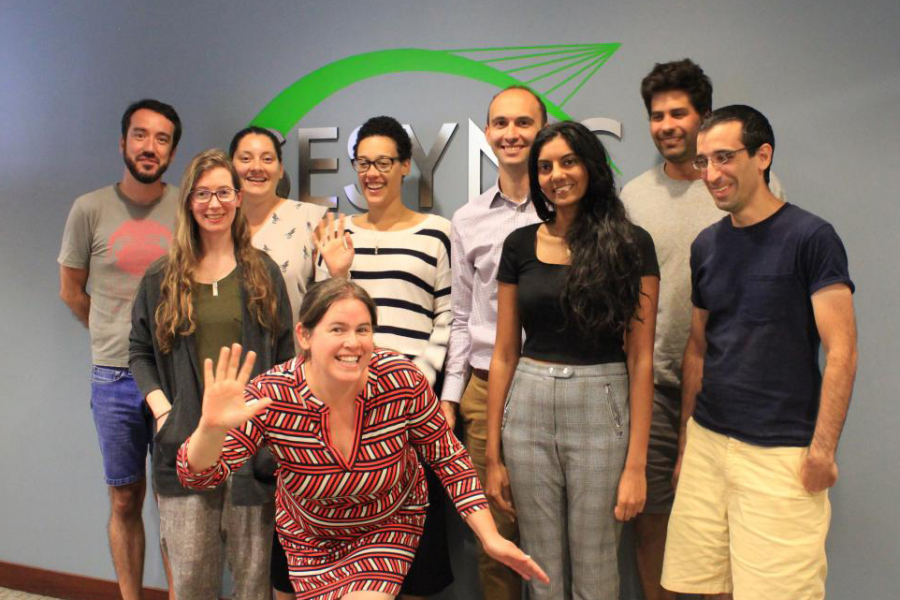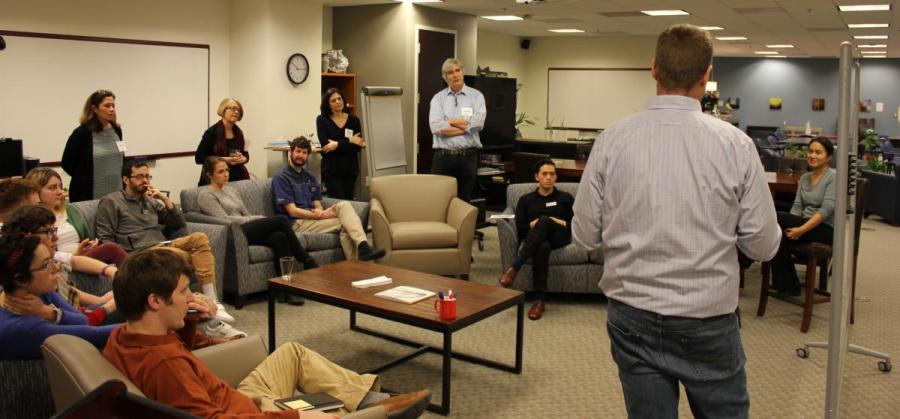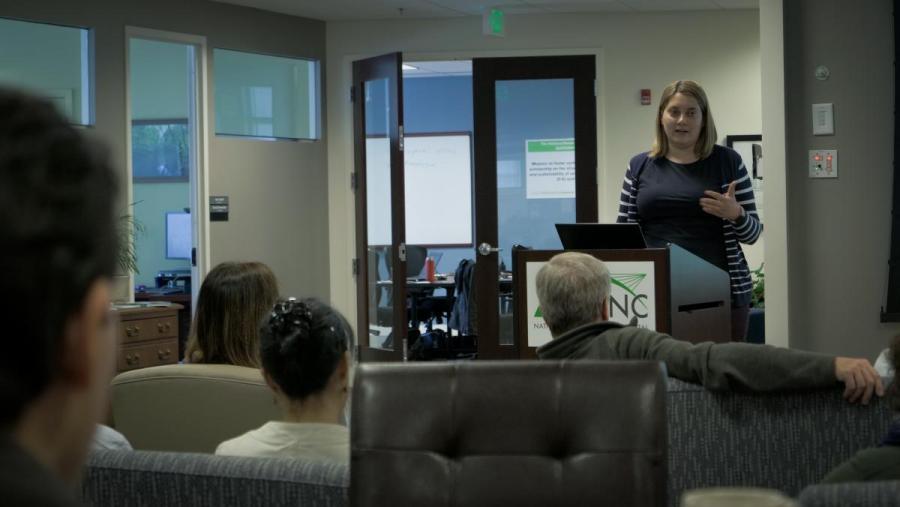
Public health nursing and environmental history from late antiquity appear to have little in common. One deals with promoting health and providing care for the sick. The other deals with the interaction of culture and nature in the past. Both fields of study share one thing: they exemplify the range of disciplines represented by postdocs in residence at the National Socio-Environmental Synthesis Center (SESYNC). Over the course of two years, the postdocs publish research and develop their skills in socio-environmental synthesis.
The interdisciplinary nature of socio-environmental problems encourages SESYNC fellows to draw from multiple fields of inquiry and combine data, ideas, theories, and methods to approach environmental questions. Since 2012, the postdoc program has supported the work of 53 early-career interdisciplinary researchers. Together, they’ve published over 180 papers and have been successful in getting jobs aligned with their career goals. A unique feature of the postdoc fellowship is that it is independent, and the postdocs choose their collaborating mentor or co-mentors. It also involves developing a network and a knowledge of pathways to science careers both inside and outside academia.
“One thing SESYNC postdocs do is improve their ability to work on interdisciplinary teams,” says SESYNC Director of Education and Outreach Dave Hawthorne. “They learn not only the language of other disciplines, but also the dispositions needed to do cross-disciplinary research effectively.” A postdoc in residence at SESYNC can interact with science teams engaged in the Center’s research pursuits and workshops, receive customized support from the data science team, and network at social events SESYNC provides, Hawthorne added.
Actionable science is another component. Postdocs at SESYNC learn how to extend their basic disciplinary training to actionable outcomes. For instance, a fish ecologist also learns about fisheries and their management for sustainability. Postdoc alumnus Steven Alexander, an environmental social scientist who is now a science advisor at the Canadian Department of Fisheries and Oceans, said he learned to bridge different ways of knowledge through co-production of science. This experience has helped him in his current role, which supports and incorporates Indigenous-led research and monitoring into the department.
“It is not easy work, nor will the changes happen overnight, but it sure gets right to the heart of actionable science,” Alexander explained. He now leads an initiative he started during a Mitacs Canadian Science Policy Fellowship that involves the launch and expansion of the Bridging Indigenous and Science-based Knowledge (BIAS-K) Web Portal, a novel geospatial platform and knowledge mobilization tool that makes accessible published case studies from across Canada.
Through the fellowship, the SESYNC postdocs strengthen skills and knowledge of computational approaches to their research. For instance, postdocs learn how to use high performance computing applications to greatly increase the scope and scale of their research. Through workshops, coaching, and customized support from the cyber team, SESYNC postdocs benefit from data science consultation during the fellowship. SESYNC offers extensive training and consulting resources that will speed a fellow’s progress in their synthesis research and allow for the development of new and stronger computational skills.

The Immersion Program is a learning component of the fellowship that educates each cohort in theory foundational to understanding socio-environmental systems, and it prepares the postdocs to conduct interdisciplinary and actionable research. The core of this experience is engagement with material and people from diverse disciplines that are relevant to research on socio-environmental systems. Through interactive workshops and lectures by visiting scholars and policy makers, as well as discussions and thought exercises and activities, the Immersion Program helps the postdocs learn a new skill set.
For alumnus Ginger Allington, assistant professor at The George Washington University in Washington, D.C., the postdoc experience helped her advance her career by greatly expanding the network of people with whom she was interacting on a weekly basis. “Just that exposure to the variety of fields of expertise and focal areas of the different pursuits—being around that was a huge education in and of itself and really furthered the more deliberate training we were receiving as part of the Immersion Program,” Allington said, adding that she still interacts with other former postdocs on a regular basis. “I definitely did not anticipate how important the cohort element of the program was for me.”

Monthly postdoc luncheons and informal discussions with peers provide opportunities for fellows to form collaborations, discuss and identify solutions to challenges they face in their research, and expand their professional networks. Alumnus Albert Ruhi, assistant professor at the University of California, Berkeley, said that these “soft skills” benefited him because they provided him the opportunity to develop skills to lead teams of scientists. He’s now the principal investigator of a two-year SESYNC research pursuit and has grown his research lab at Berkeley to include nine researchers. Ruhi is also a mentor to current postdoc Xavier Benito, who is studying paleoecological-scale resilience, integrating social and biophysical records to understand the dynamics of complex socio-ecological systems.
Fellows have the additional opportunity to participate in a wealth of Center activities as observers or as active participants. These activities may include seminars and working groups focused on areas as diverse as: global pet trade and disease; water security and ecosystems; trait-based ecology to understand economic and social impacts of climate change; social network analysis of response to environmental disasters; health, food security, and environmental impacts; coupling of social and environmental dynamics in integrated models; soil microbial diversity and humans; and environmental shifts, human livelihoods, and mobility.
For outgoing postdoc Christopher Field, the interactions he participated in during his postdoc fellowship left him eager to conduct more interdisciplinary research in the future. He said, “The space to think about research differently, and the culture here in general, has led to some of the best work of my career so far, and I’m excited for people to see more of it soon.”
So, whether it’s research focused on environmental history or nursing, urban hydrology or ecology, SESYNC welcomes applicants from diverse disciplinary backgrounds to conduct synthesis research on problems arising from the relationship between humans and nature. Details on how to apply for the postdoctoral fellowship program can be found online (See RFP.) Applications for the 2020-2021 fellowship are due November 8, 2019.